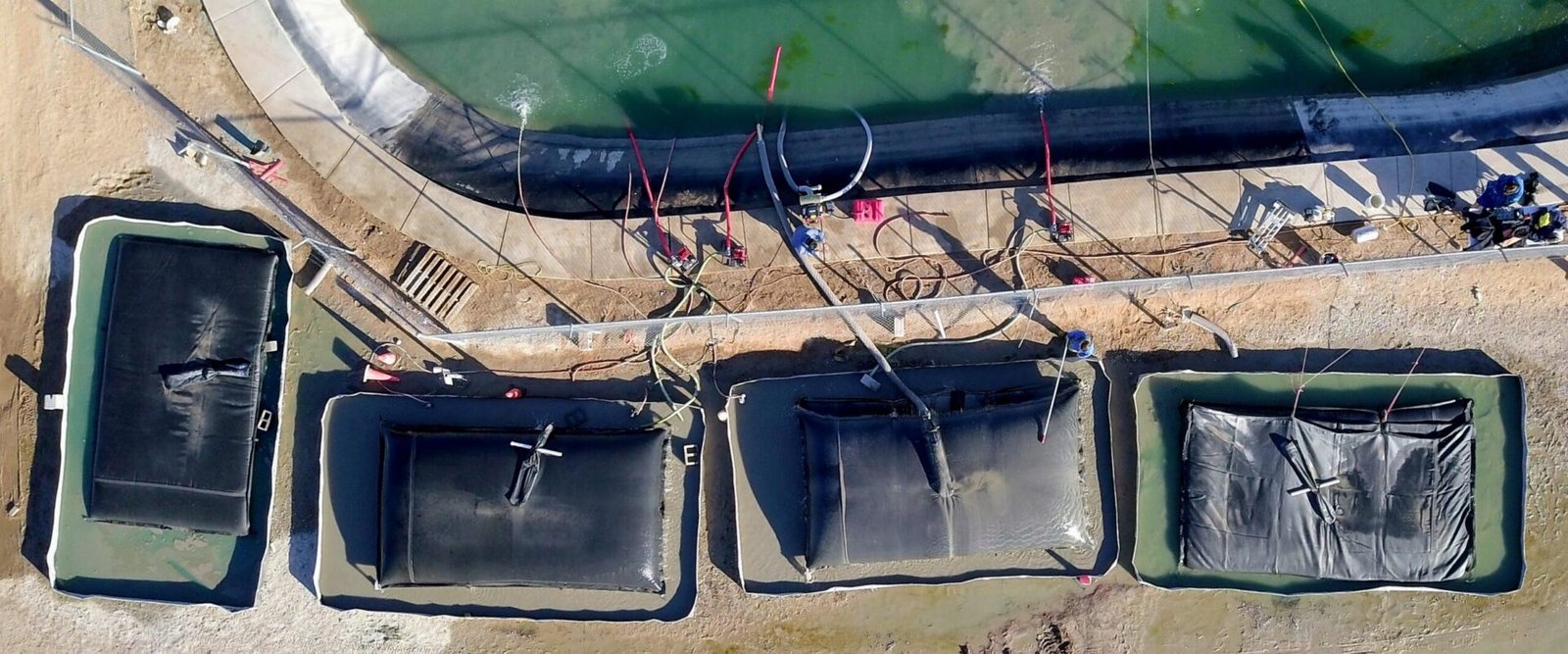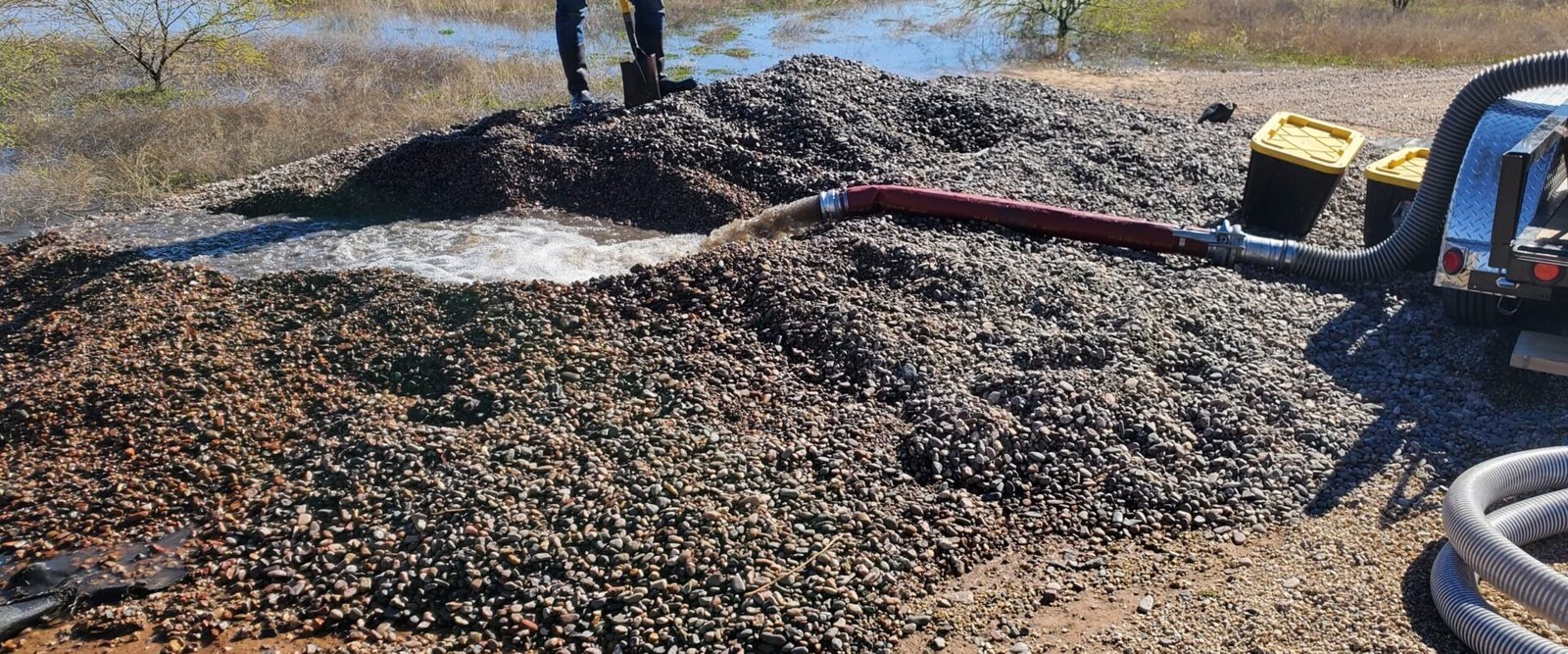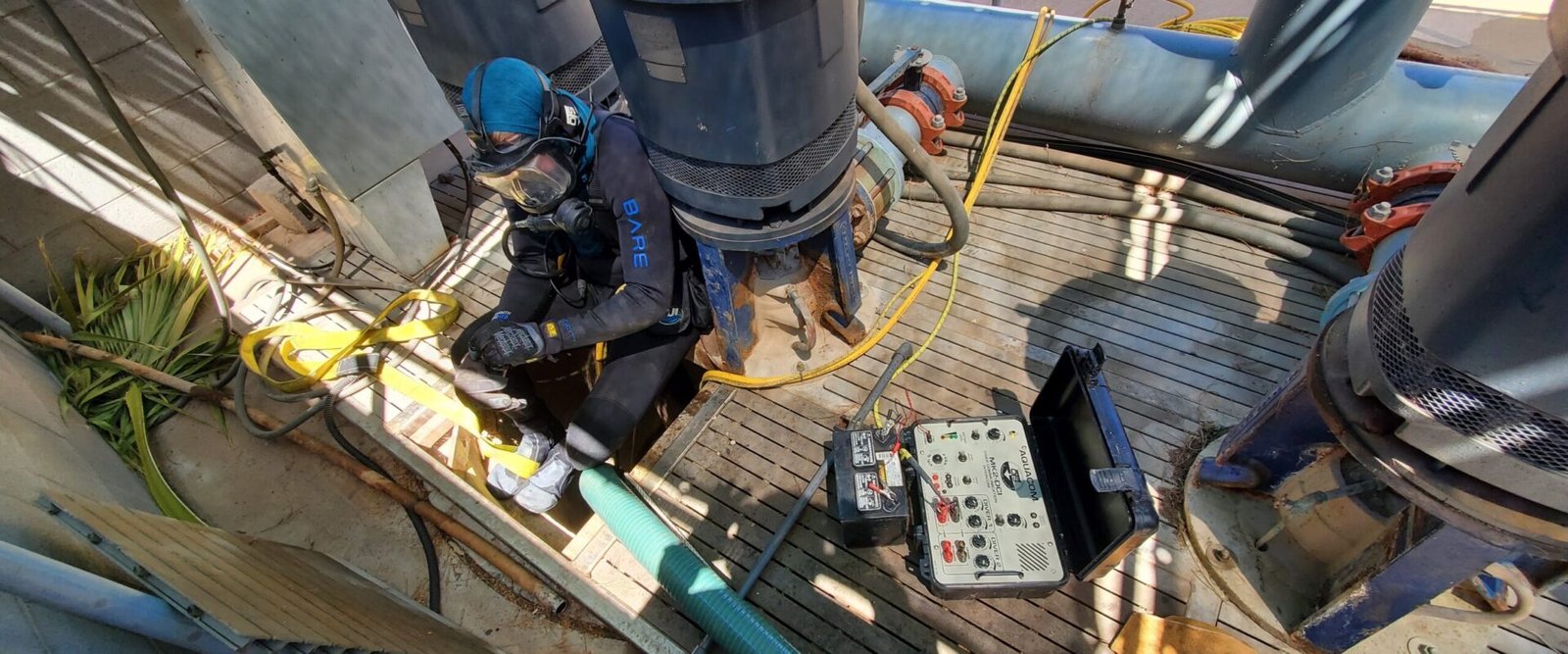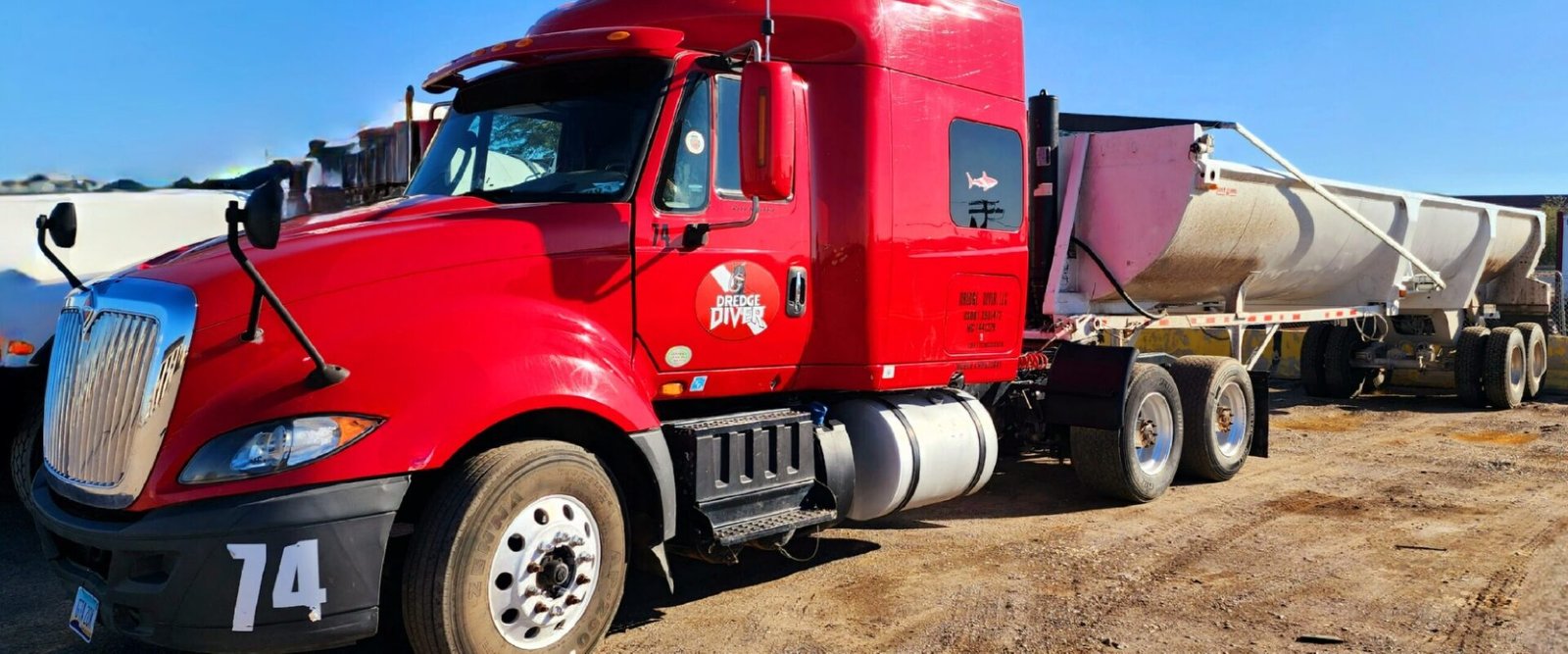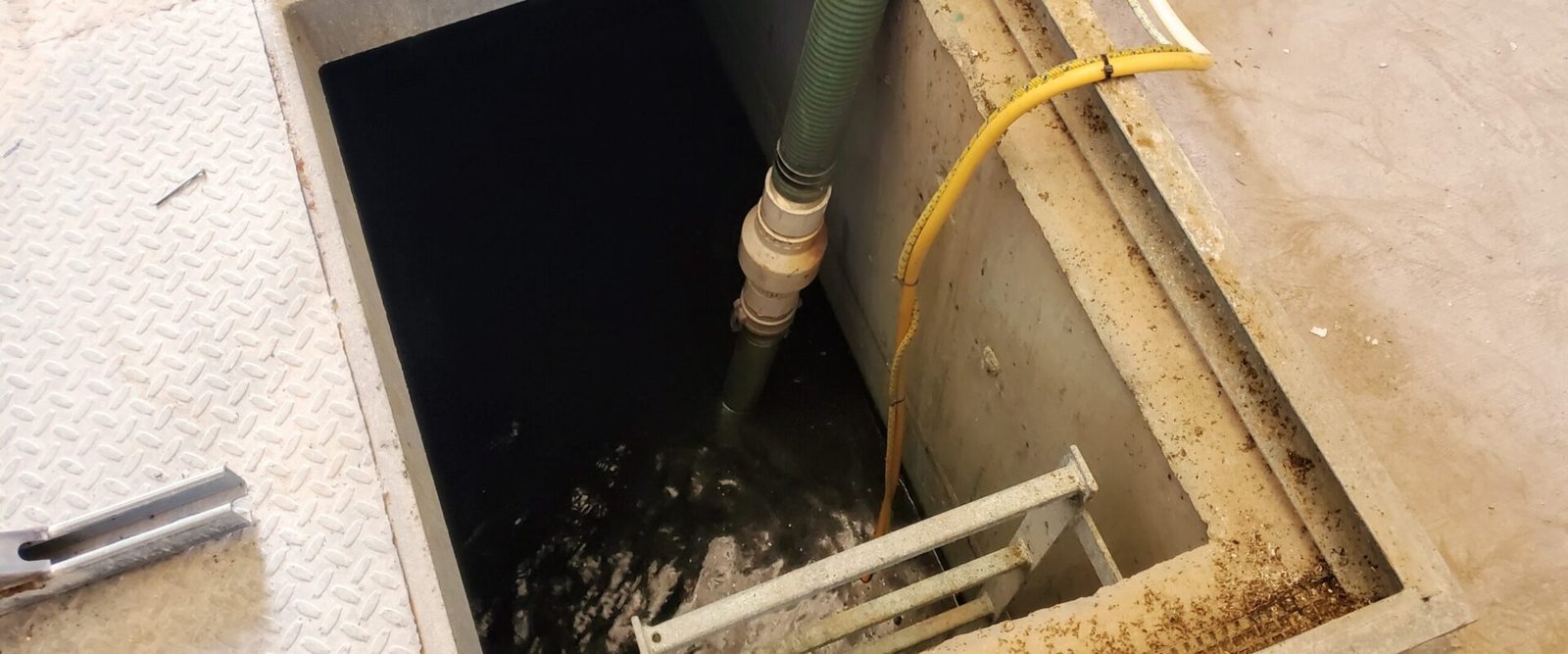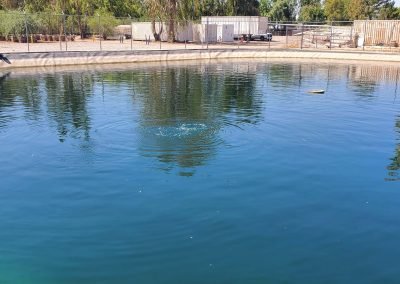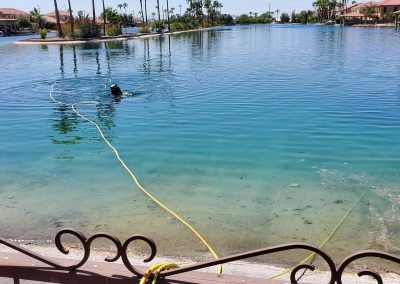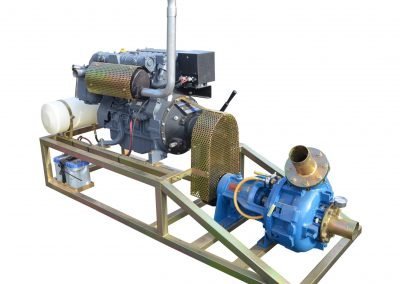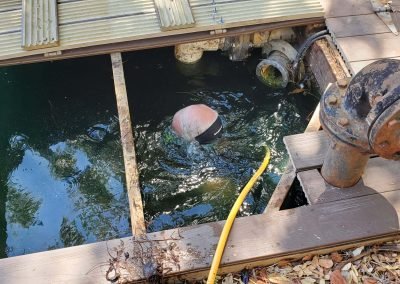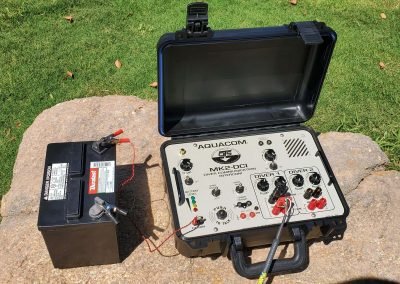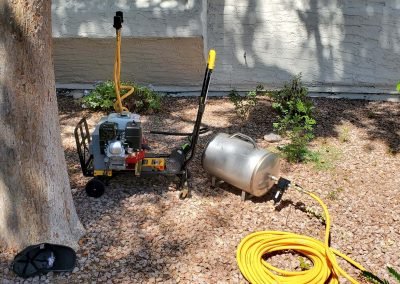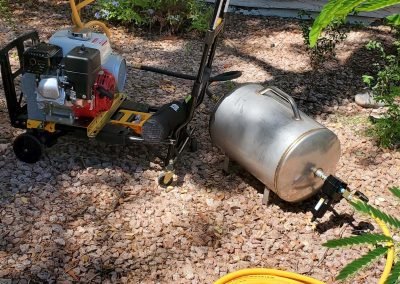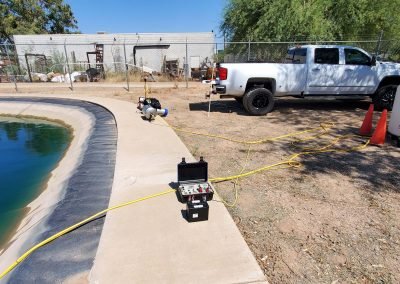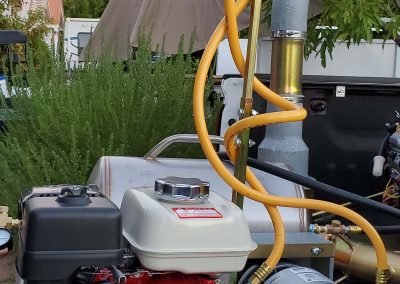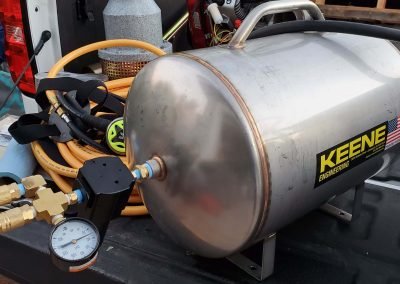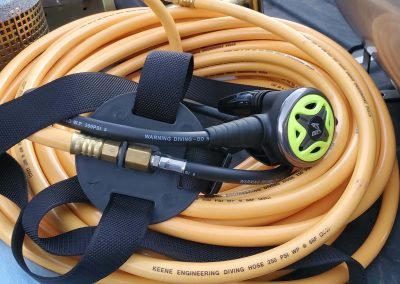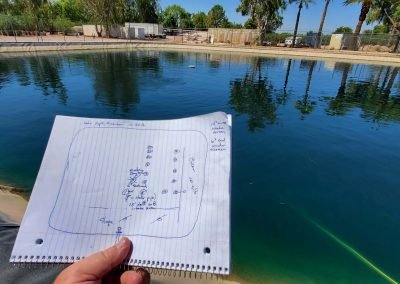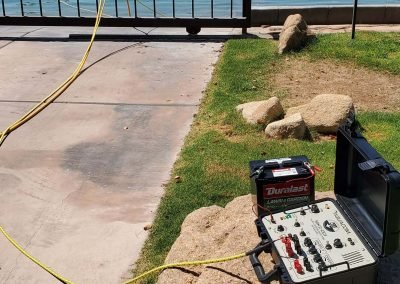Get In Touch
Please complete the form below and we will get back to you as soon as possible.
WHY DREDGE?

Here in the desert, we have no natural lakes. Even the bodies we consider “semi-natural”, because they are fed by a river or stream, are formed by dams that cause the water to back up into a reservoir. Man-made lakes are simply holes, dug into the earth, lined with plastic, concrete, or clay, and filled with water.
As lake managers we work to create artificial circulation to simulate a natural environment. We use aeration, fountains, and waterfalls to oxygenate the water. Fish are often stocked to handle natural pests such as mosquitoes, macrophytes(aquatic plants), or algae. Without an outlet, “silt” accumulates on the bottom of these water features as a result. This sediment gathers in many natural ways including dust storms, erosion, and dead and decaying matter settling into the mud. People contribute by adding chemicals to the water, debris tossed in or blown in from litter, landscaping techniques are notorious for introducing grass and other clippings, and other less-natural mechanisms.
Silt build up cannot be remediated with more chemicals or bacteria or enzymes and must be physically removed eventually. Matter can change form through physical manipulation and chemical reactions, but through any of these changes, matter is conserved. The same amount of matter exists before and after the change—none is created or destroyed. This concept is called the Law of Conservation of Mass. If left long enough, you will end up with more silt than water.

Eutrophication or excessive richness of nutrients in a lake or other body of water is the eventual result of this build up and can cause a dense growth of plant life and death of animal life from lack of oxygen. One nutrient in particular, phosphorus(P), builds up and can be problematic for the aquatic environment if excessive P loading is allowed.
At a certain P loading, shallow lakes are more productive(in terms of algae and weed growth) than deeper lakes. Man-made lakes, especially, are shallow in comparison to their natural counterparts. Consider a lake with an original depth of 50 feet that accumulates 2 feet of silt over 30 years. That amount represents a 4% reduction in depth over that time. A man-made lake, on the other hand, that starts at 8-9 feet of depth and gains the same amount of silt over the same period has been reduced by 25% of its depth, significantly reducing the amount of water storage. The enrichment of organic sediments and the lower volume of lake water can have a negative impact on the oxygen budget which can result in fish kills. The accumulated nutrients and harmful substances in the sediments can be mobilized when disturbed resulting in resuspension and changes in chemical conditions.


There are varied methods to combat P loading. Alum treatments, among other methods, can be used to bind the phosphorus, but this treats only one symptom and not the root of the problem. The Phosphorus remains. Dredging offers a more permanent solution to internal P loading in shallow lakes than alum or other treatments because sediments, the actual source of the P loading, are removed from the system permanently.
A progressive and high-tech solution for removing sediment from the lake bottom is portable hydraulic dredging. Sediment dredging is the partial or complete removal of sediment layers rich in nutrient and organic matter. This technique can be multipurpose, resulting in control of both phytoplankton and macrophytes. Dredging aims at (1) deepening of shallow lakes, (2) eliminating accumulated toxic substances, (3) reducing the release rate of P, and (4) controlling rooted macrophytes(plants and weeds). Additionally, dredging serves to sustain the technical functions of lakes or reservoirs. In the case of man-made lakes, a pleasant aesthetic to be enjoyed by all, free of foul smells, dead fish, algal blooms, and other unpleasantness in residential features.

Our hydraulic dredge floats on the water and pumps the material through a pipeline to the shore or an offsite location, often several hundred feet away. This dredge acts like a floating vacuum cleaner that can remove sediment very precisely. We use scuba divers to guide the suction in the specific areas where silt is to be removed. The sludge is then dewatered for a period of time and hauled away when it sufficiently dry to load and transport.
With a hydraulic dredge, the discharge line, geotextile tubes, and water return line are the only obstructions in the environment. The lines are usually on the ground or underwater. Other than this, the dredge, a pontoon boat equipped with the pumps, motor, and hoses is the only machine to be seen. It is a very unobtrusive method that does not require severely disturbing the shoreline or draining the entire body of water. Hydraulic dredging provides the cleanest and least obtrusive method for sediment removal without damaging pond liners, clay bottoms, or the lake edge.
We look forward to an opportunity to visit your water feature to determine what method is best suited to your needs. We can do an underwater survey and provide you with a detailed report on the bottom conditions of your lake or pond.



